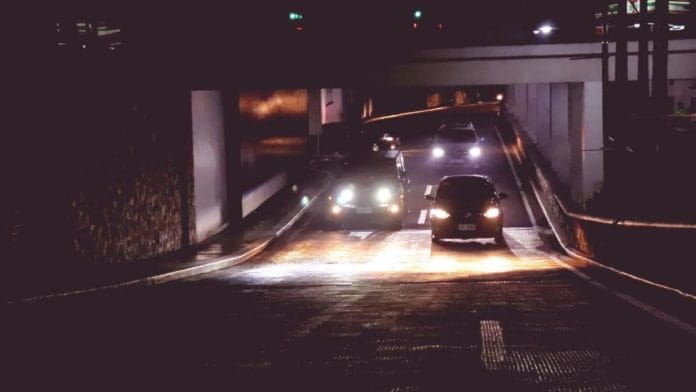Have you ever found yourself on a dark, deserted road at night? You’re driving along nonchalantly when suddenly, an oncoming vehicle emerges, its headlights on full beam mode, seemingly glowering with rage. This forces excessive light into your iris – which functions like the aperture on a camera – and practically blinds you. You try to flash the driver with your own headlights, but they don’t quite respond. While this ‘blindness’ lasts only a few seconds, it feels like an anxiety-filled eternity. Night or day, you must watch out for obstacles on the road, after all.
This is an all too familiar story for many of us. It doesn’t have to be a deserted stretch. Even in a well-illuminated city, you find yourself facing traffic of all sorts, with their lights unnecessarily at full beam. Worse still, there are those who have illegally modified their vehicles, invariably with lights that seem to have the output of a star. Even with these modifications, modern headlights and other light technologies, for that matter, are nothing like the tungsten-filament headlights your parents used. Lights today are more energy-efficient and far brighter than ever before. Ergo, they are also more damaging to your eyes.
The solution, according to some with a regulatory bent, is to ‘ban’ high-beam headlights. Here is the thing. In the very recent past, I found myself driving at night through forests. During the Bharat Drive, while headed from Mysuru to Coimbatore, I drove through the Sathyamangalam Tiger Reserve in a Mahindra Scorpio-N with no one else on the road other than the support vehicle behind me. For kilometres on end, considering the twists and turns of the ghat sections and the unmarked speed breakers all over the stretch, I had no choice but to drive with a full high beam.
You need high beams—only sometimes
I would like to think that for the most part, I’m a considerate user of the roads. When I saw traffic on this stretch, I immediately reduced my headlights. In case I was moving slowly, the traffic would reduce their beam first, leading me to follow. Sure, there was that odd driver in between who didn’t oblige, but it was mostly alright on this low-traffic stretch in northwest Tamil Nadu. The point I’m making is that you need to have high beams on at times, sometimes even in a city, if it’s pitch black with hardly any streetlights in sight.
Technology can help, and I experienced that first-hand a few months ago when I was driving the Honda Elevate on the hilly roads of North Bengal and Sikkim. Part of the Elevate’s ADAS (Advanced Driver Assistance Systems) suite was an automatic light adjustment system. If the vehicle sensed another car coming closer, it would automatically reduce the intensity of my headlights.
The in-built camera of the car probably has a light intensity sensor, similar to what cricket umpires use. Of course, the Elevate is not the only car to have this feature, but this was the first time I had ever seen it in action during a nighttime drive in the hills. And I was fairly impressed.
As I have written before, ADAS features, particularly Automatic Emergency Braking (AEB) are great. But unless a majority of vehicles on the road have them, one cannot take full advantage. I have also written about eye health in the past, a grossly and terribly ignored aspect of driving in India. After all, how many commercial vehicle drivers do you see wearing glasses? I mean, just look around you, how many people in your friends and family circles wear corrective lenses? Quite a few, I bet. And how many of your taxi drivers wear glasses? Far fewer, I can safely assume. I am very certain that poor vision plays a major, and unfortunately undocumented, role in vehicular accidents in India. While governments have made it mandatory to get eye tests before acquiring a driving license, the less said about that process the better.
Also read: New Swift mileage shows Suzuki returning to ‘Kitna Deti Hai’. It can be so much more
Glass matters
I have been wearing glasses for 30 years now. Yes, I am old. In that period, I have noticed how glass technology has evolved just as quickly as light techcology. Recently, I acquired a pair of safety glasses for drivers. If you haven’t guessed by the 200-plus columns I have written for ThePrint, I drive a lot and sure need such glasses. I do not mean to sound too flattering toward them, but these are certainly the best I’ve used.
These glasses use a special coating to reduce short-frequency ultraviolet light (remember your electromagnetic spectrum, folks). The white light you see on many cars today is biased toward shorter frequencies. The light is not only blinding, it is also extremely strenuous. And you feel it while driving at night, even if you are well-rested when you’re starting. After a couple of hours, particularly if you have middle-aged eyes like me, they hurt. But this new pair of glasses has made my life easier. I was recently returning from the mountains and had to drive, after dark, on serpentine hill roads and then expressways. While it would be a stretch to say that I wasn’t tired, my eyes did not hurt as much as they used to earlier. And I must say I appreciate them while working too. They are expensive for sure. The progressive lenses I wear cost over Rs 25,000. But your eyes are worth it, right?
While I hope certain technology solutions on vehicles make the high-beam problem less intense, I can’t stress enough the importance of getting regular eye check-ups. Just because you think you have good vision doesn’t mean that you do. Being able to see clearly on roads could save your life and that of others.
@kushanmitra is an automotive journalist based in New Delhi. Views are personal.
(Edited by Zoya Bhatti)






